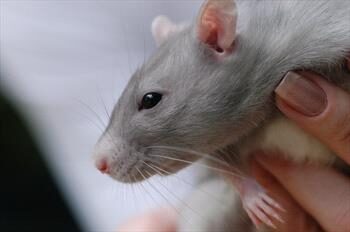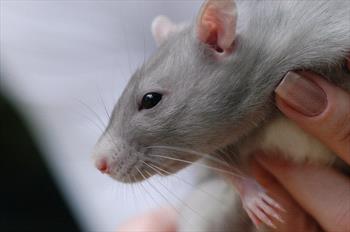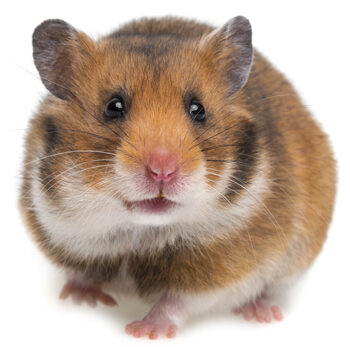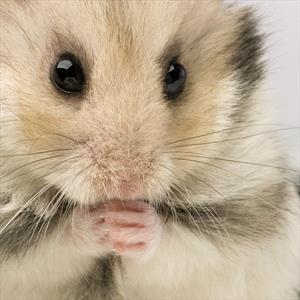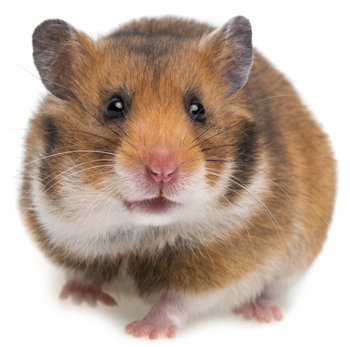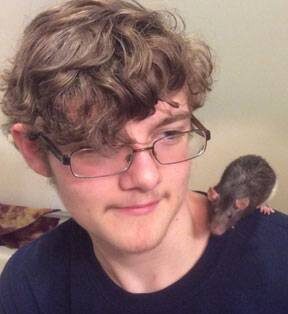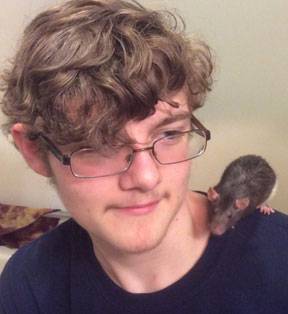Parents’ Guide to Selecting a Small Pet for Children

Many adorable small pets are available to you and your children, but which one suits you, your children and your lifestyle? Do you want to be able to have young children hold them, or is it enough for your kids only to watch their pets as entertainment?
It’s helpful to think in advance about what small pet would best suit your lifestyle before your children spy a desperately desired impulse purchase.
Rabbits
Pros: Adorable, often very playful and social. Can be kept solitary or in small groups. Should be spayed/neutered, which allows for “mixed sex” groups.
Cons: Expensive and high maintenance to take care of properly
Best for children old enough and responsible enough for significant cleaning duties as well as food preparation; early teens and up.
Taking care of a rabbit is similar to expense and effort required to care for a dog or cat. They require daily out of cage social time and playtime, large amounts of leafy green vegetables to eat every day, and therefore also produce lots of poo to be cleaned every single day. They should be spayed/neutered and require regular veterinary care particularly as they age.
Mice
Pros: Small and inexpensive pets. Can be kept solitary and in small groups. Learn routines and food games quickly. With enough in cage stimulation, do not always require handling.
Cons: Fast moving, smelly, and may be nippy
Good for even very small children if they will not be handling, but older children (8 and up) if they want to hold the mice.
Mice are engaging and very personable pets which can be reasonably content in a confined space if provided lots of enrichment. However, they do have very stinky urine, and so steady cleaning is required to keep their environment healthy.
Rats
Pros: Very engaging and interactive pets, intelligent, social, learn games quickly.
Cons: Short life expectancy and relatively expensive to maintain
Good for children of all ages if they are old enough/mature enough to be able to gently hold the rats.
Rats are wonderful pets, and full of personality. They are best kept in small groups of 3-4 animals, and need a LOT more room than you might expect to be happy. They also require a lot of social engagement and environmental enrichment. Rats will eat themselves into oblivion, and it takes care and attention to prevent obesity. Unfortunately, they are sadly short lived, rarely making it more than 3 years, and often requiring a significant amount of veterinary care in that time period.
Hamsters
Pros: Amusing pets which are relatively content in a fairly small space. Can be kept as a solitary pet. Will create and play games entirely by themselves, but also often enjoy human interaction.
Cons: Nocturnal, can be very nippy, and fairly short lived.
Hamsters are best kept by older children who are able to gently hold a fast-moving animal and are responsible enough to wash their hands after contact.
Hamsters are delightful little animals – at 2 o’clock in the morning. Their nocturnal habits and tendency to be grouchy during daylight hours make them often poor pets for children. They also can carry a number of diseases which can be contagious to humans. These adorable creatures are most appropriate for night owl adults.
Gerbils
Pros: Active, entertaining, maintenance-light animals. Can be kept in small social groups, and when neutered, can be in mixed sex housing.
Cons: Need lots of space to maneuver
Good pets for children old enough to gently restrain them, likely mature 6 year olds and up.
Gerbils are wonderful and active small animals, but they do need plenty of space and good ventilation for their antics. They also require regular cleaning and careful feeding to stay healthy long term.
Guinea Pigs
Pros: Friendly, social, interactive pets. Often love human interaction, toys, and developing games. Can be kept in small groups or solo.
Cons: Delicate and require careful handling
Guinea pigs are good pets for even very young children, although they should not be allowed to handle them until they are significantly more mature – such as 8 and up.
Guinea pigs, with their funny looks and even funnier sounds, are great pets and make good family pets with careful adult supervision when they are handled. Their short and squat body type isn’t forgiving of being manhandled or dropped. They also require some careful attention to be sure they are being fed a properly supplemented diet, and may require some regular veterinary care.
Chinchillas
Pros: That adorable little face. Friendly and engaging, active, entertaining, and often quite social and playful. Females can be kept in small groups, or solo, males are best kept solo.
Cons: The mess, the chewing, and the nocturnal habits
Chinchillas are not frequently handled – they prefer keeping themselves busy, so they are appropriate for even small children to watch at play.
Chinchillas are an adorable pet just begging for an impulse purchase at the pet store. However, they are very high maintenance in the cleaning department, leaving small dry poo everywhere they go. They also tend to leave much harder to repair tooth marks in anything that they can manage to chew. Combine this with their need for a lot of time out of the cage, nocturnal habits – and these animals need just the right household to fit in.
Ferrets
Pros: Amusing, busy antics – almost like the blend of a puppy and a kitten that never grows up. They are intelligent, interactive, and best kept in small groups. Because they typically come already neutered, mixed sex groups are possible.
Cons: Finding trouble everywhere they go, high maintenance, and significant veterinary costs
Ferrets are best pets for older children, those approaching their teens.
Ferrets are incredibly fun pets, acting with reckless abandon for most of their 5-7 year lifespan. Unfortunately, this abandon combined with a strong tendency towards serious medical problems makes them extremely expensive to maintain – and not all veterinarians will treat ferrets. The level of care that they require can easily match or exceed that of a dog or cats.
Parakeets
Pros: the beautiful colors and engaging personality. Some learn to talk, most do interact with whistles and other sounds. Can be kept solo or in small groups.
Cons: Can be nippy and difficult to train
Most parakeets are not excited about being handled, and as such – they are appropriate for even very young children who will be able to watch their antics without touching them.
Parakeets are often thought of as good “first birds”, but they tend to be more of the independent sort, and although they crave attention, it is on their terms. They can be difficult to train, and are known to deliver swift nips when things are not going their way. Many were raised on “bird seed” – which is not an adequate diet and can lead to very expensive medical problems which are avoided with proper feeding.
Finches
Pros: The barrage of entertaining noises and watching the interactions between birds. They are active, engaging, and enthusiastic in their behavior. Best kept in small groups of single sex birds.
Cons: largely a caged pet – not one amenable to handling
Finches are not birds that enjoy handling, so they are appropriate for children of all ages to enjoy them playing within their cage.
Finches can be great fun for someone looking to have a bird that is content to spend all of its time in a (large) cage. Finches should be kept in small groups – and watching them interact is great fun. Do be aware that they can be quite messy, and be prepared to clean flung food and poop not only within the cage, but also well around it.
Bearded Dragons
Pros: Very social, interactive, and inquisitive. Best kept as a solo animal. Large and bright cages can make for a “center piece attraction” to a room
Cons: Expensive to maintain properly, requires a lot of attention to detail
Bearded dragons can move unexpectedly and surprisingly fast, and should not be handled by young children, but while in their cage can be enjoyed by children of all ages.
Bearded dragons are often considered a “starter reptile” – but this does not mean that they are “easy.” There is a lot of special equipment required to take good care of a bearded dragon, and attention to the details of temperature and humidity are needed to keep them healthy. That being said, they often crave attention and are one of the more social common reptile pets.
Geckos
Pros: Able to be maintained in a smaller enclosure than many other pet reptiles, interesting to watch. Best kept as a solo animal. Good starting point in to the world of reptiles.
Cons: Nocturnal, high maintenance, and requires a lot of attention to detail
Geckos are not typically fans of lots of handling, and as such, are best enjoyed by children of all ages within their cage. Older children may be able to safely handle them, but not likely before the age of 8-10.
Geckos are very fascinating creatures, and watching them maneuver in a well-enriched enclosure can bring hours of enjoyment. However, to stay healthy, they do require careful attention to the particulars of their husbandry and careful feeding, and can be prone to some very expensive medical problems – so these are appropriate pets for those with the inclination and means to care for them.
Sugar Gliders
Pros: Extremely engaging and entertaining animals. Active, full of personalities, and can be neutered to allow for mixed sex groups. Do best when kept in small groups.
Cons: Nocturnal, very smelly urine, high maintenance, and expensive to care for
Sugar gliders do not enjoy being awakened during the day and can be very grumpy about handling when they are tired, and so I recommend them for older/teenaged children and adults.
Sugar gliders are adorable, engaging pets – but are most active at night, which can keep the grumpy pet owner awake! They are high maintenance and are fairly expensive to care for properly. Males should be neutered for population control if males and females are housed together. Females can be safely spayed by a veterinarian knowledgeable in sugar glider anatomy, however, it is a more difficult surgery and we do not yet know if there are benefits from a health perspective. If not fed properly, they are likely to develop some costly medical problems.







